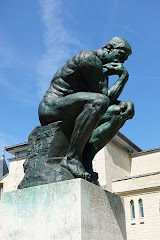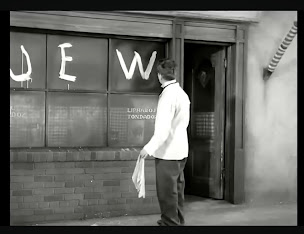This blog is a thinking activity assigned by Barad Sir. In this, we shall analyse the frames of the movie, ‘The Great Dictator’ and connect it to the setting of the 20th century. For more information, you can check out this blog.
‘The Great Dictator’ is a 1940 American anti-war, political satire, black comedy film written, directed, produced and starring British comedian Charlie Chaplin. This movie is the first sound film by Charlie Chaplin. This film employs satire to scrutinise fascism and Adolf Hitler’s regime during World War II. The film uses humour and irony to expose the absurdity of dictatorship, war, and tyranny. Chaplin‘s portrayal of both the Jewish barber and Adenoid Hynkel (parody of Hitler) allows him to juxtapose humanity against the folly of power and dictatorship.
The opening statement:-
The opening statement of the film serves as a commentary on the historical context of the time. It says, “This is a story of a period between two world wars - an interim in which insanity cut loose. Liberty took a nose dive and humanity was kicked around somewhat”.
Chaplin describes a period between the two world wars as a time of upheaval, chaos, and a decline in values like liberty and humanity. The world was experiencing political unrest. It was the time of economic turmoil and history saw the rise of dictator’s like Adolf Hitler and Benito Mussolini. Through the opening statement, Chaplin sets the stage for the films exploration of consequences of unchecked power.
Memory of good times:-
In this frame, we see the plane is upside down. The soldier (Jewish Barber) is humourlessly suspended in the air. The pilot realises that the plane is about to crash and he remembers the spring in Tomainia. He thinks about his wife and her love for daffodils. This scene shows the yearning felt by soldiers. It portrays their memory of good times and sufferings caused by war.
Narcissism of the Dictators:-
The introduction scene of Adenoid Hynkel is a satire on the theatricality of dictators. We can see Hynkel standing in front of a grand army giving a passionate speech. The mannerisms and gestures are reminiscent of Adolf Hitler. This scene shows the power of spectacle and narcissism of the dictators. The introduction of the character in this manner is a commentary on the cult of personality surrounding authoritarian leaders.
Incompetence of the leaders:-
Immediately after giving a public address, the leader takes a tumble down the stairs. This hilarious scene shows the incompetence of the leaders and their pretentiousness in front of the common people. The dictators like to pretend to be some divine saviour, when in reality they are just as common as anyone else. They are not as mighty as they would like the public to believe.
Propaganda of Dictators:-
This frame shows the image-building and propaganda done by dictators. They use interactions with children to show themselves to be kind, caring and benevolent leaders. Hynkel’s cruel and tyrannical actions contrasting with the facade of kindness exposes the hypocrisy of leaders. It shows how staged events are used to manipulate public perception.
Treatment of Art:-
Through this frame we can see how Hynkel manipulates art for propaganda purposes. In the above given frame we see the sculpture called “The Thinker” by Auguste Rodin. The sculpture is of a man, sitting in deep contemplation. The statue is used to represent philosophy. Here we see a modified version of it as the statue is saluting the dictator while thinking. The original statue looks like the picture given below:-
Mistreatment of Minority:-
Through the multiple scenes in Ghetto, we see how minorities are abused and mistreated. Examine the frame below.
The soldiers paint the words “Jew” on the Jewish Barber’s shop. This act of vandalism shows how the Jewish community were targeted and discriminated against under the oppressive regimes. Through scenes like this Charlie Chaplin addresses the real world atrocities committed by the Nazi Germany and other totalitarian regimes.
Desire of World Domination:-
One of the most memorable scenes from this film is the ballet performed by the dictator holding a balloon that resembles the globe. This shows the desire of world domination that thrives in the hearts of leaders. The balloon is a metaphor for his desire to control the world and his comical and exaggerated moments reflect the egotistical and self-centred nature of dictators. He wants the world at his fingertips. However, as the scene comes to an end, the balloon bursts. This can be interpreted in two ways. One can argue that complete control of only one individual will certainly damage and destroy the world as we know it. One can also interpret the hopeful message that no matter how strong a particular individual is, he can never truly control the world and the his dream bubble of control will burst, sooner or later.
For deeper analysis of the scene, you can check out a paper by Gretchen Vanick here - The Childish Dictator.
The Speech of Hope:-
The final speech delivered by the Jewish barber, who is mistaken for the dictator Hynkel, is a powerful and timeless piece of cinematic history. The speech is a heartfelt monologue in which Charlie Chaplin speaks directly to the audience. He delivers a passionate plea for peace, humanity, and tolerance. He signifies the importance of kindness in the world. Chaplin’s words transcend the confines of the film’s narrative and addresses the real world issues of war, oppression, and importance of compassion. The speech criticises the destructive nature of greed. The speech is a call for people to come together, reject hatred and strive for a world where freedom and equality prevail.
The final speech left a deep impact and resonates with audience across different eras. It is a powerful cinematic moment that remains relevant.
You can read the final speech here - The Final Speech
For further analysis of the speech click here - The Power of Voice Merging by Alex Masterson
You can also check out the following video analysing the speech:-
Conclusion:-
To conclude, ‘ The Great Dictator’, stands as a timeless masterpiece that employs satire and symbolism to deliver a powerful social and political commentary. Through the frame analysis, we witness the masterful visual storytelling of Charlie Chaplin. From the exaggerated military parade to the ballet with the balloon Globe, each frame serves a purpose in conveying a profound message. The movie not only serves as a historical artifact, capturing the zeitgeist of its era, but also as a reminder of the enduring struggles against the tyranny, and the importance of embracing our shared humanity.
You can check out the movie here:-
Words - 1226
Images - 12
Videos- 4












Comments
Post a Comment